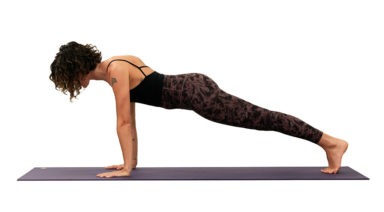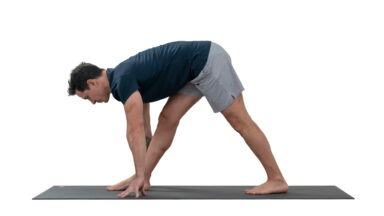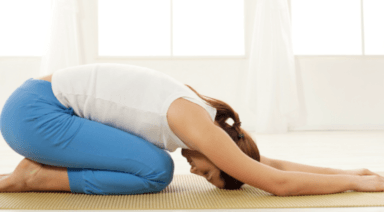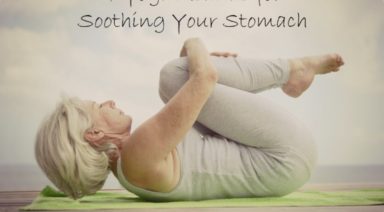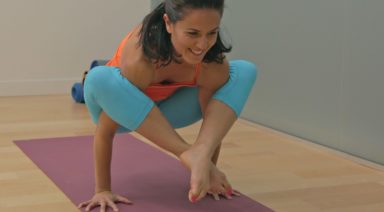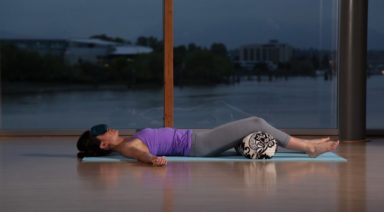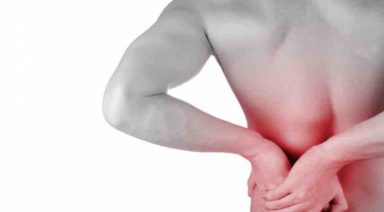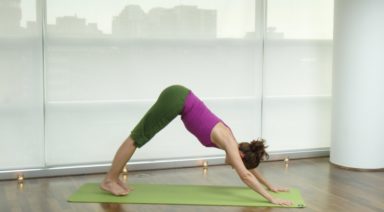Ustrasana: Camel Pose

A powerful way to boost your energy and your mood, ustrasana (oosh-TRAHS-anna) offers a long list of benefits for both the physical and subtle bodies. Thanks to its many variations and modifications, there are plenty of ways for practitioners of all levels to appreciate the physical and chakra-opening effects of camel pose.
Philosophy + Origin
Although the name of this pose is camel because the shape resembles the hump on a camel’s back, there are other ways to consider the name when approaching the posture. Camels are known for their slow, steady, almost methodical way of moving. Rather than trying to race into the posture, being slow and methodical will help you find its benefits without risking discomfort or strain. In the same way, camels use their humps as food reserves, like well-packed bags ready to be used when needed. This type of physical preparation, a part of the camel’s natural adaptation for survival, is essential for this pose as well. Take your time to gather and practice the skills and knowledge necessary to take a back bending journey to ensure that you enter and exit the posture with ease and poise.
ADJUSTMENTS/MODIFICATIONS
- Keep your toes tucked rather than placing the tops of your feet flat on the floor.
- Place a folded blanket under your knees for extra padding.
- Keep your hands on your lower back and pelvis rather than reaching back for your heels.
- Place the crown of your head against a wall as you extend back rather than letting the head hang down.
STEP-BY-STEP
- Kneel on your mat with your knees inner hip-width apart.
- Either place the tops of your feet on the ground or tuck your toes under.
- Without moving your knees, squeeze your inner thighs toward each other. You might imagine the inseam of your pants moving back behind you.
- Place your hands on your low back, fingertips pointing down. Draw your elbows behind you.
- Lift your chest up to the ceiling. As you continue lifting, your torso may begin to move back in space.
- Keep your neck long rather than dropping your head back.
- Option to reach one hand, then the other, back toward your heels.
- Stay for 3-5 breaths (your breath may be more shallow than usual).
- Gently release to neutral, then take a seat on your heels or on the ground.
PREPARATORY POSES
- Cobra pose | Bhujangasana
- Bridge pose | Setu bhandasana
- Locust pose | Salabhasana
SEQUENTIAL POSES
- Reclined hero pose | Supta virasana
- Upward-facing dog | Urdhva mukha svanasana
- Floor bow | Dhanurasana
COUNTER POSES
- Staff pose | Dandasana
- Childs pose | Balasana
SANSKRIT
- Ustra = camel
- Asana = pose
PHYSICAL BENEFITS
- Stretches your chest, abdomen, thighs, and hip flexors
- Strengthens your back, and glutes
- Improves overall posture
ENERGETIC BENEFITS
- Stimulates energetic centers in the body, primarily the chakras located in the navel, heart, and throat
Legal Disclaimer Before participating in any exercise program or using any fitness products or services that may be described and/or made accessible in or through the Gaia Website and/or the Services, you should consult with a physician or other healthcare provider. Read more about Gaia’s Terms Of Use.
Journey into a Conscious Life
Stream your way with unlimited access to 8,000+ original programs, practices, and films. Feed your curiosity with metaphysics and the unexplained. Connect and center with yoga and meditation. Begin a new journey.
Phalakasana: Plank Pose

ADJUSTMENTS | BENEFITS | SEQUENCING | SANSKRIT | STEPS
Phalakasana (fall-ack-AHS-anna), is an essential posture for a strong yoga practice. Holding plank pose will improve your endurance and muscle tone, help develop the strength needed for more complex poses, and generate heat and stimulating the navel chakra.
Philosophy + Origin
Hidden in the pose’s name is the Sanskrit word “phala,” which means to bear fruit or ripen. In yoga, the idea of tapas, often translated as “heat,” “passion,” or “discipline,” fuels the physical asana practice, encouraging students to seek out the challenge again and again in order to become stronger, to build an internal flame in the body that fuels every aspect of life. When you think of plank pose as an opportunity to “ripen” or “bear fruit,” you become aware of the transformative effect of this seemingly simple (although challenging) pose. Each time you enter the pose, use the breath to ripen the fruit of your labors. The ability to hold this pose with steadiness and grace is known to create major shifts in your practice and your life.









